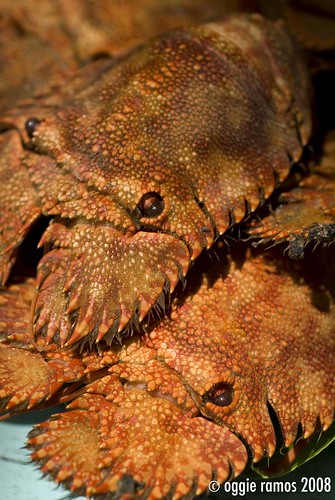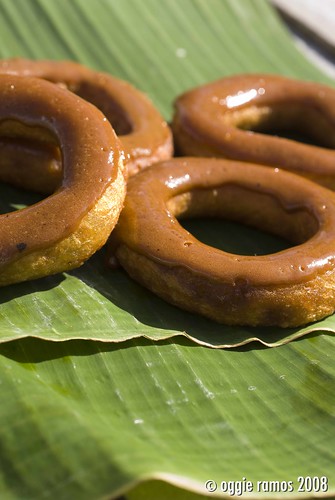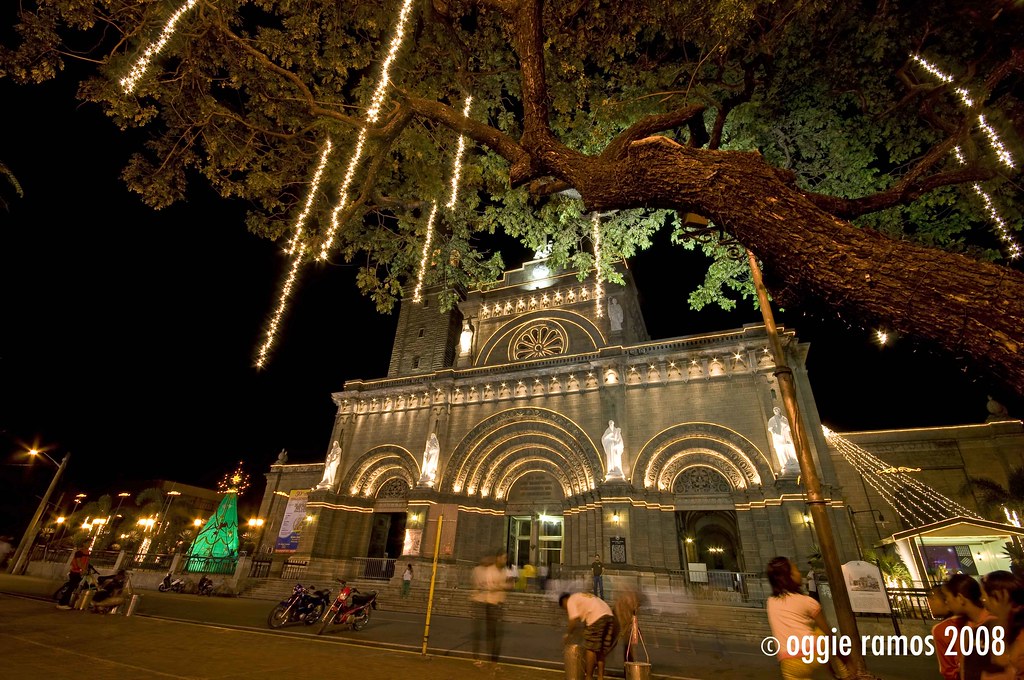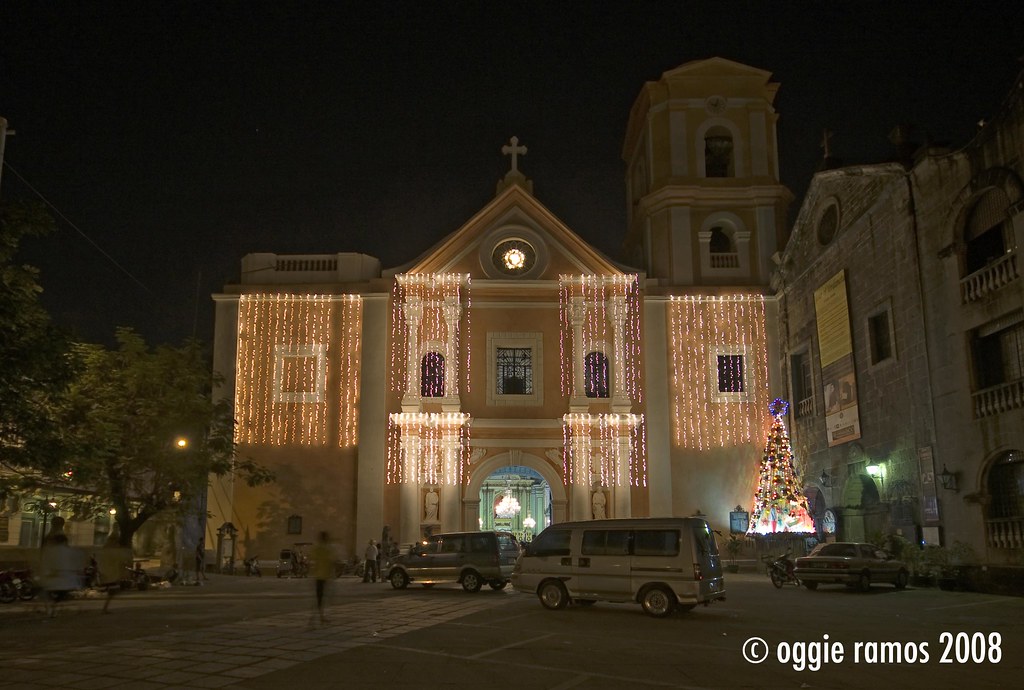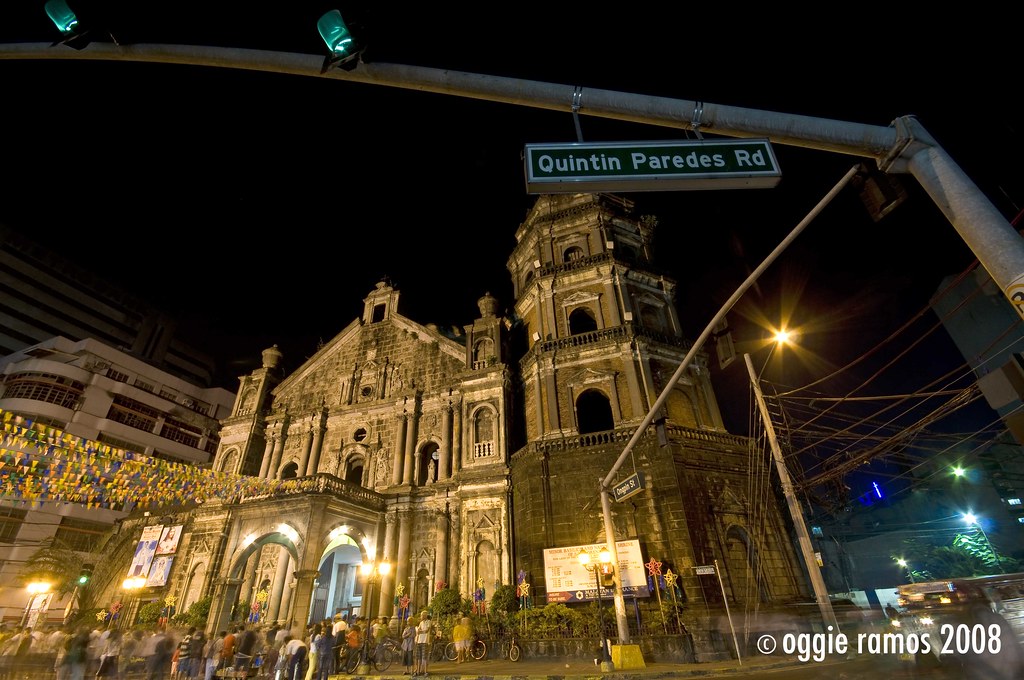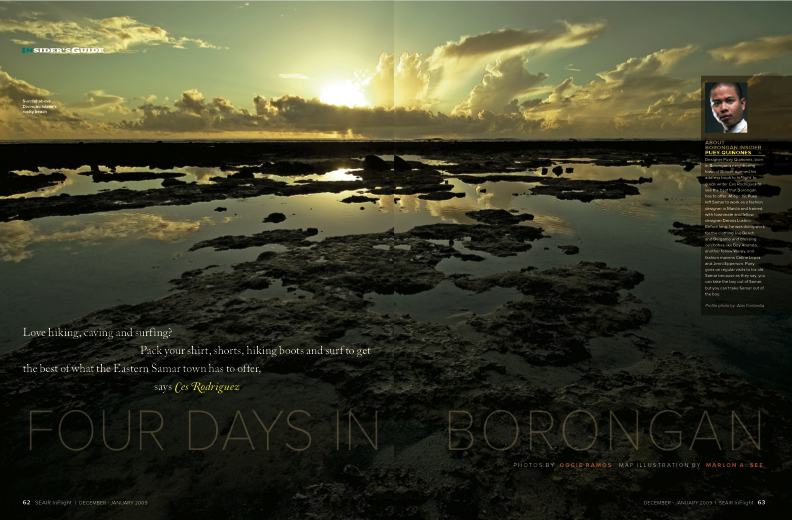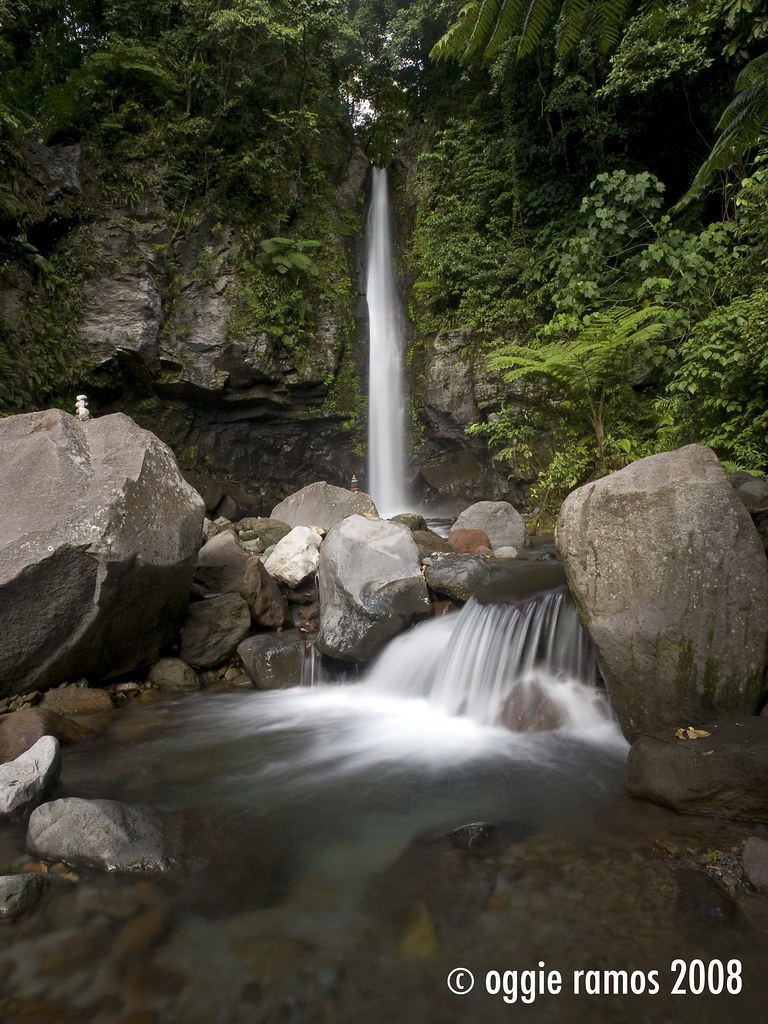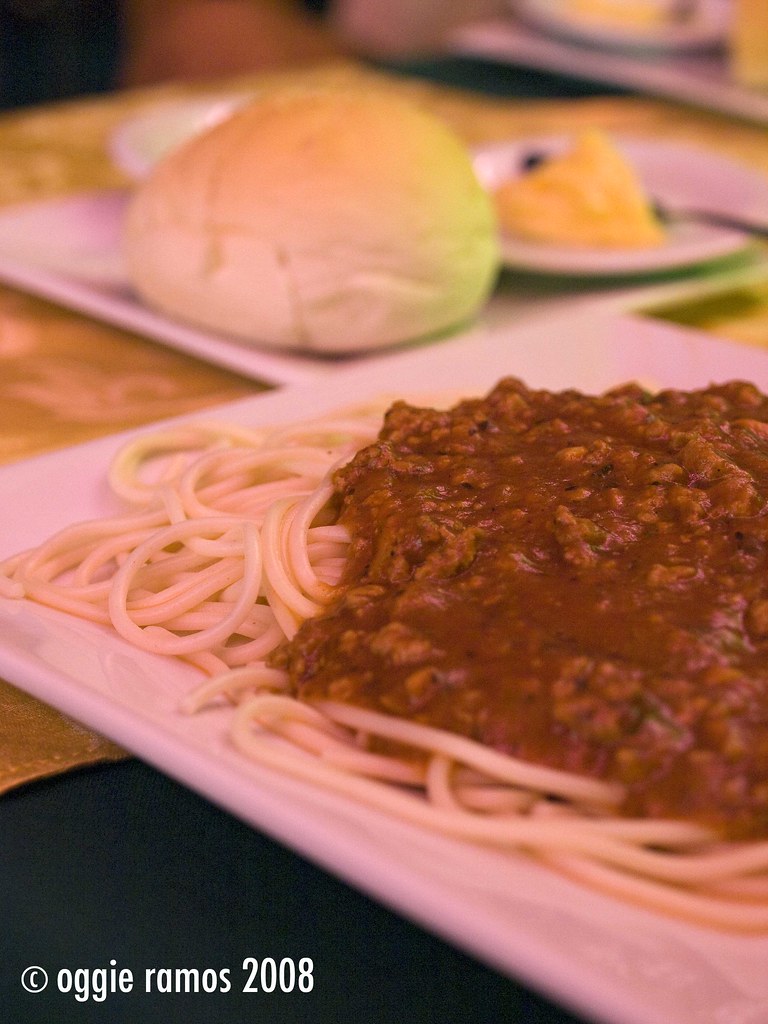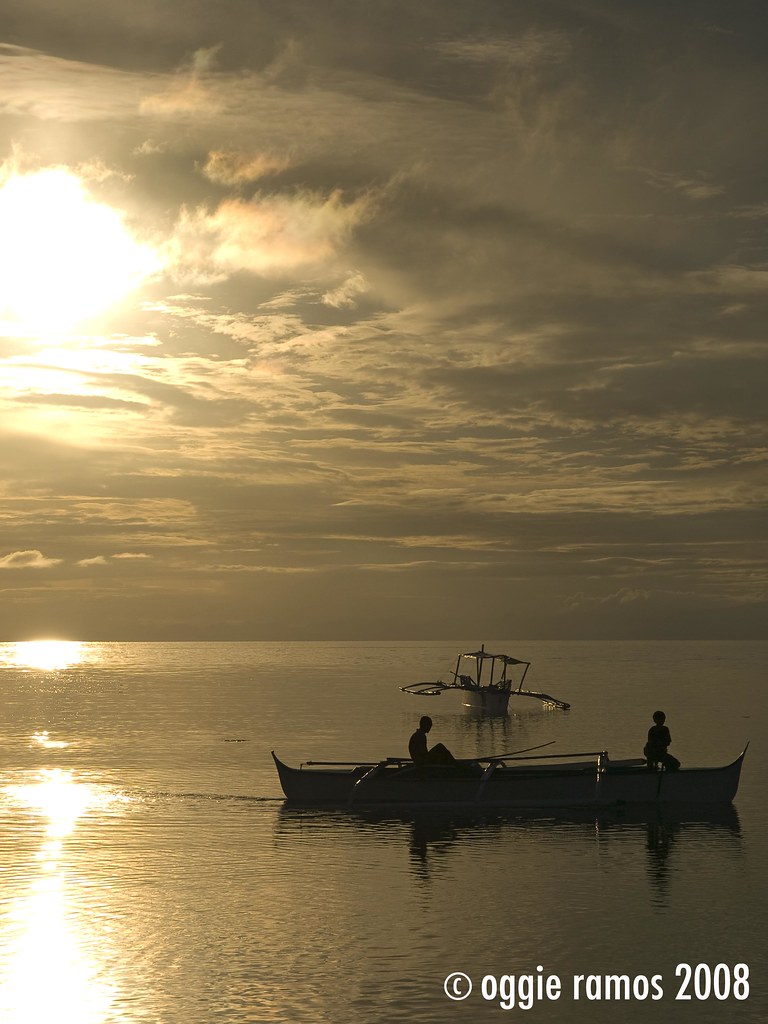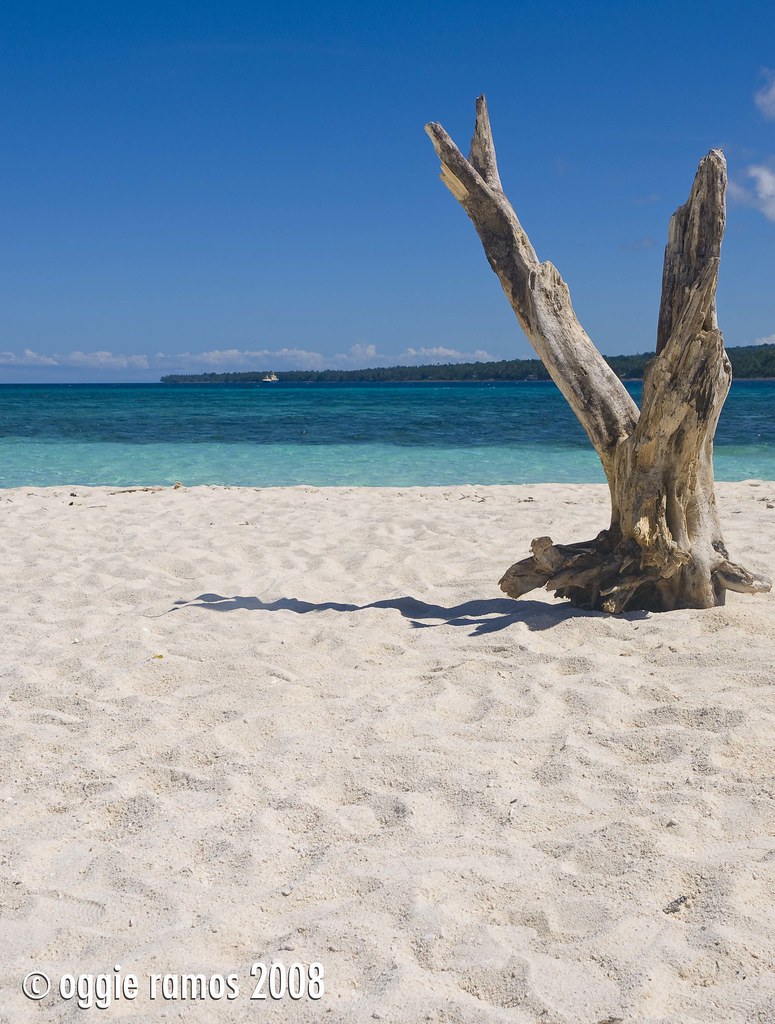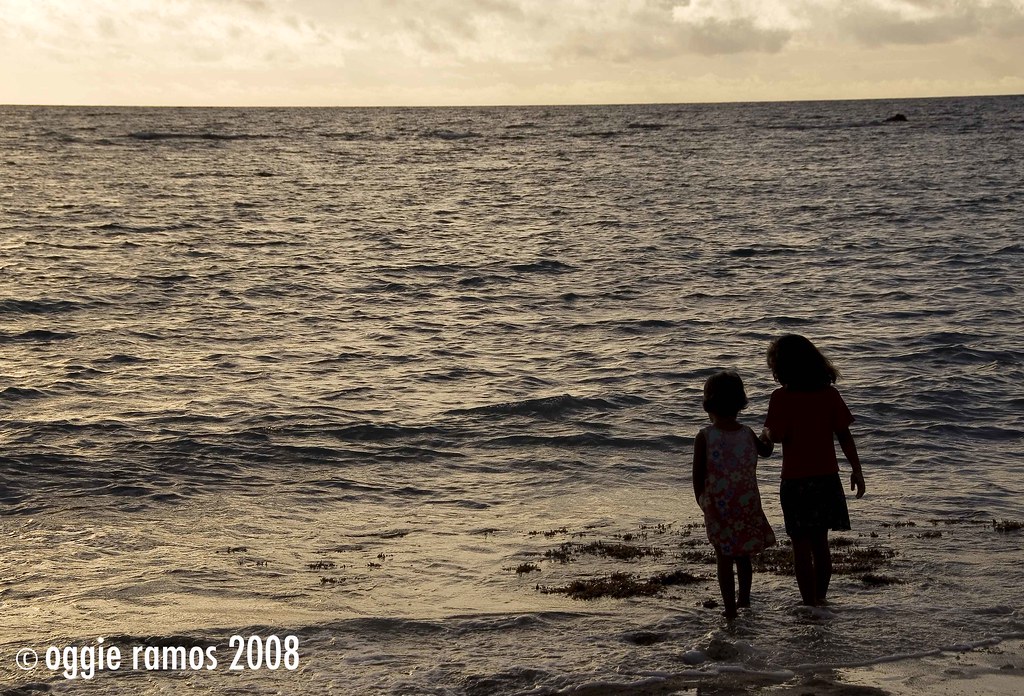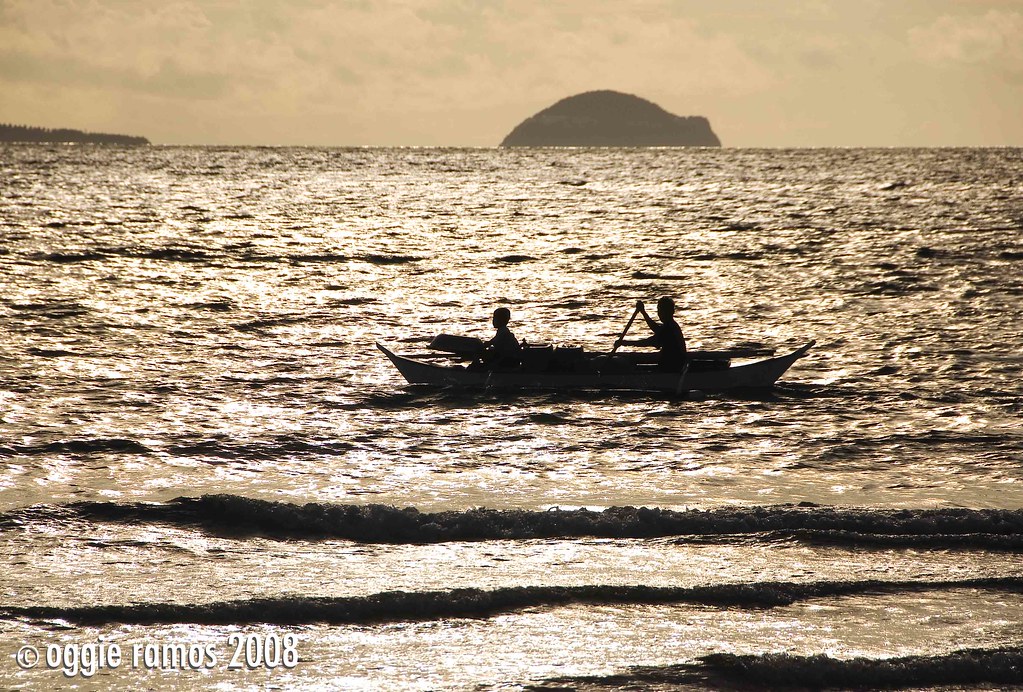WHY GO NOW? It’s a good time to surf in Borongan, with stronger waves coming in from the Pacific Ocean. and even if you’re not into surfing, it’s still a good time to observe rural life at Christmas and partake of the capital town’s specialty, spit-roasted pig or lechon stuffed with aromatic herbs, salted and basted with secret sauces. Like most small towns in the country, Borongan observes simbang gabi, nine days of dawn masses at 4am that culminates in a midnight mass on Christmas eve and a burst of fireworks as locals call out, “maupay na pasko!” (Merry Christmas). In January, there’s the big town festival, Ati-atihan, a parade of locals in religious and tribal costumes, and some dancing in the streets.
GET YOUR BEARINGS. The capital town of Eastern Samar, Borongan lies almost midway on the coast of the elongated stretch of Eastern Samar in the island group of the Visayas. Sprawled across 58,289 hectares, it has the biggest land area among the 23 municipalities of Eastern Samar. With around 55,000 residents, it is also the most populated. Borongan also called the city of the golden sunshine, lies 196 kilometers from Tacloban City, and 586 kilometers southeast from Manila.
The city gets its name from the word “Borong” which means fog. once inhabited by Negritos driven to the hinterlands by interlopers from nearby Indonesia and Malay, Borongan was organized into a pueblo by the Spanish missionaries from 1595 to 1620. They gathered the early Boronganons into communities. A church, dedicated to the nativity of the Virgin Mary was erected in 1710 and stands to this day, sadly modernized beyond historical recognition.  ISLAND SIGHTS AND STORIES. Start by visiting Borongan’s lighthouse, built by the Americans in 1906. it looks out to the Pacific Ocean and the view is well worth the effort.
ISLAND SIGHTS AND STORIES. Start by visiting Borongan’s lighthouse, built by the Americans in 1906. it looks out to the Pacific Ocean and the view is well worth the effort.
To get to it, we started with a 10-minute boat ride from the main island’s Locsoon beach in Bgry. Lalawigan, southeast of the city proper to Divinubo Island at the ungodly hour of 4am. If we had approached the island in the correct conditions – 12 noon or midnight with a full moon or a new moon – we could have done it by foot, instead of cutting across the waters. Ronald Lapada, islander, and our tour guide for the day, said getting to the island by foot would take about an hour.
Our boat ride (P12 person, one way) was easy, but we had to walk up more than a hundred steps built on the side of a mountain, and take the rocky, muddy, potholed and spindly path with weeds to reach the slender lighthouse.N arrow outside stairs with rusty crumbling handrails curve up the parola or lighthouse, on top of which you’ll find solar panels. A flat-roofed structure in front of the lighthouse provides a great view of the island, the sea and the sunrise.
On Divinubo, the Guiporo-e Natural Pool, located after a five-minute through brush, sand and mangrove saplings, springs like a surprise from beyond a rocky bend – a horizontal clump of rocks festooned with mangroves in the near distance, cupping a placid pool. If you fancy a dip, the water is nicely warm. Karawisan Eco-Tour Park Resort, still on Divinubo is also a good place to stop by for a relaxing few hours. You can rent a string hammock (P25) and snooze under the leafy talisay trees. the broad-leafed talisay tree bears nuts that’s as creamy as Bicol’s Pili nuts. Pecked by birds, the talisay nuts grow three times a year and turn yellow when ripe. Entrance to Karawisan is P5 per person. You can rent picnic huts at P200 a day or P250 if you want to stay overnight. There’s a small store if you want cold sodas and bottled water. Unless you’ve made previous arrangements, food is not available. Guests are charged P50 for the use of the kitchen. you can rent a straw mat for P50, pay another P50 if you want to pitch your own tent or P100 for a table with 6-10 chairs.
Karawisan Eco-Tour Park Resort, still on Divinubo is also a good place to stop by for a relaxing few hours. You can rent a string hammock (P25) and snooze under the leafy talisay trees. the broad-leafed talisay tree bears nuts that’s as creamy as Bicol’s Pili nuts. Pecked by birds, the talisay nuts grow three times a year and turn yellow when ripe. Entrance to Karawisan is P5 per person. You can rent picnic huts at P200 a day or P250 if you want to stay overnight. There’s a small store if you want cold sodas and bottled water. Unless you’ve made previous arrangements, food is not available. Guests are charged P50 for the use of the kitchen. you can rent a straw mat for P50, pay another P50 if you want to pitch your own tent or P100 for a table with 6-10 chairs.
If you need a guide to the tourist spots on Divinubo, you can hire the services of tour guide Ronald Lapada, who also heads the island’s community-based resource management (CBRM) for between P200-250 for a whole day. You can also make arrangements to have CBRM members prepare your breakfast, lunch or snacks. Contact the Borongan City Tourism Office, headed by Tourism Operations Officer Marissa Acorin, for inquiries, trip itineraries and reservations. call: 055/5609700, 0927.9321377 fax: 055/26131267 or email [email protected]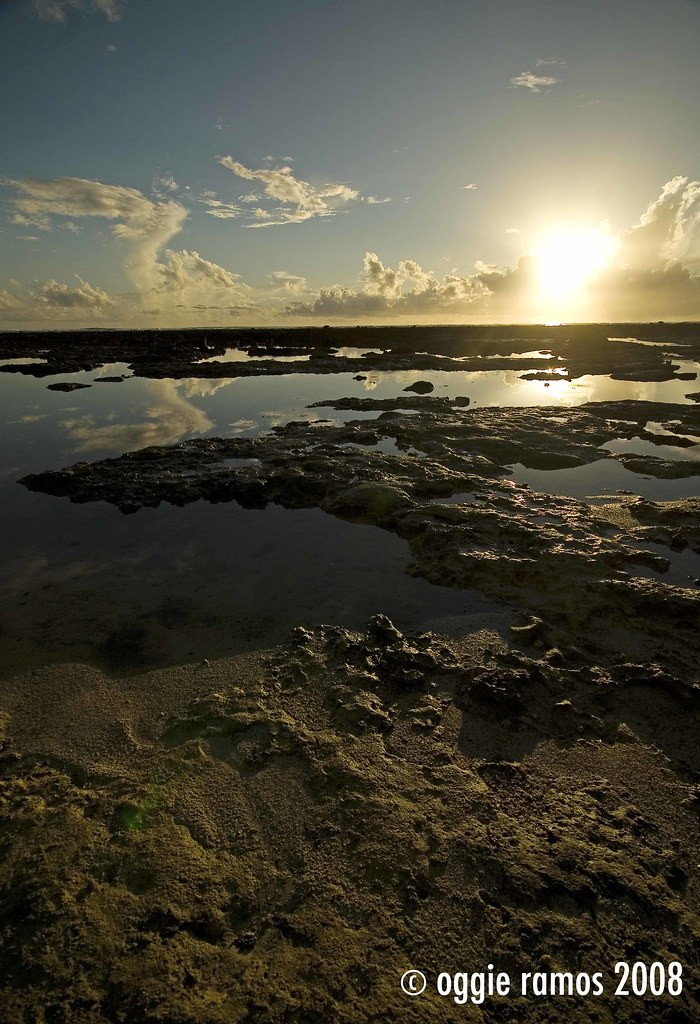 A TREK TO THE FALLS. For starters, trek to the Kaputian Falls and forget Pangi Falls unless you are a die-hard trekking fanatic.
A TREK TO THE FALLS. For starters, trek to the Kaputian Falls and forget Pangi Falls unless you are a die-hard trekking fanatic.
“Are you serious?” a staff from the municipal office looked at us askance when we suggested proceeding to Pangi Falls after a scheduled stop at the smaller and friendlier Kaputian Falls. Pangi, they said, while majestic, was a grueling three-hour trek up slippery slopes and across rushing rivers.
Kaputian Falls whose waters Waray Puey Quiñones says are crystal clear, is worth the trek, if only for the fresh air, exercise, and the rewarding sight of water rushing down a placid refreshing pool.
From the town proper, we piled into a roofless tricycle, which looked more like a pedicab, all five of us including our guide Migs de las Alas, balanced according to weight (P60 per person, round trip). The ride took 30 minutes along 10 kilometers of dirt and rut and brief sections of paved roads on which mats of rice husks and splintered coconuts dried out in the sun. in Brgy. San Miguel, we registered at the barangay hall, walked through the raucous village, past an ongoing cockfight held in an open dirt arena, past the smooth rocks and gentle grassy slopes of the Mt. Tarangban cave system on our way to the falls. The climb soon gave way to a tricky underbrush where the trail was muddy and required steady footwork, across a river, testing our foothold on the mossy rocks, the waters sloshing our thighs. Then it was on to more arduous trails, including a tight steep downward funnel that had a member of our party breaking a tree sapling for us to hold on to and break a possible fall. After a 30-minute trek, we caught sight of the falls, dropping three meters down to a small lovely pool. SURF N' SKIM. There’s growing interest in the swells of Borongan for surf enthusiasts. The Borongan Tourism Office has listed Guiuan, the southernmost tip of the province as its surf site. Located 110 kilometers south of Borongan, Guiuan has powerful swells that reach from six to 10 feet. To get there, there are jeeps that leave Borongan in 30 minute intervals beginning at 4am. The last trip is at 2pm. the ride costs P150 and takes from three to four hours. then, take a tricycle (P30) to the town of Sulangan, which is another 25 minutes away. The only resort in the area is Surf Camp, according to the Tourism Office. Surfboard rentals can rage from P1,000 to P1,500 a day. Novice surfers can hire tutors at about P700 per day.
SURF N' SKIM. There’s growing interest in the swells of Borongan for surf enthusiasts. The Borongan Tourism Office has listed Guiuan, the southernmost tip of the province as its surf site. Located 110 kilometers south of Borongan, Guiuan has powerful swells that reach from six to 10 feet. To get there, there are jeeps that leave Borongan in 30 minute intervals beginning at 4am. The last trip is at 2pm. the ride costs P150 and takes from three to four hours. then, take a tricycle (P30) to the town of Sulangan, which is another 25 minutes away. The only resort in the area is Surf Camp, according to the Tourism Office. Surfboard rentals can rage from P1,000 to P1,500 a day. Novice surfers can hire tutors at about P700 per day.
Skimboarding is another growing interest among Boronganons. Roderick Bazar, 22, who has organized the Borongan Skimmers Club (e-mail: [email protected] or call: 0927/4028222), said the waters of Borongan are good for skimboarding. Surfing is best from November to January when the waves are a little wilder or when there’s a brewing storm. Bazar lists Suribao, Locso-on, and Sabang south as good skim spots but you don’t need to stray far for a little board action.
Baybay Boulevard or the oceanside stretch featuring a two-kilometer shoreline is in the heart of the town and is a favorite spot for local skimboarders. Contact Salabay Skim Shop (F. Abella St., Brgy. C. call: 0918/2173408 and 0927/4028222) for inquiries on rentals or sales.  NEW EATS. Borongan is a good place to taste the local delicacies and to indulge yourself in the freshest seafood, according to our insider guide Puey. On Divinubo, octopus still slithering in its net and lobsters, crabs and unusual shellfish tried to scuttle away as they were strewn on the wooden table before us for inspection before they were scooped away to be cooked the “sinaing” way, which is to simmer in a pot of water.
NEW EATS. Borongan is a good place to taste the local delicacies and to indulge yourself in the freshest seafood, according to our insider guide Puey. On Divinubo, octopus still slithering in its net and lobsters, crabs and unusual shellfish tried to scuttle away as they were strewn on the wooden table before us for inspection before they were scooped away to be cooked the “sinaing” way, which is to simmer in a pot of water.
The cupapa or rock lobster (P350 per kilo, raw) is Puey’s special favorite. Cupapa is seasonal, plentiful during the months of May and October. Divinubo’s petite lobsters, also called banagan, sell raw for P450-500 per kilo. Then there’s the mamadas, a flaky white fish and the manlalara, also known as danggit, for P140 per kilo. Coordinate with the city tourism office to arrange for a seafood lunch at Divinubo.
The variety of shellfish harvested from the waters of Borongan is unusual and delicious. There’s the tojillon, made into napkin rings and the ganga, often seen only in souvenir shops. The ganga is a spider conch with meat that tastes fresh as the sea and a texture that’s reminiscent of snails. The Mabaroca Beach Resort will prepare it for you by special arrangement.
Call: Margarita Castillo at 055/5609377, 5609809, 0928/6220699 or e-mail: [email protected]. Mabaroca is also the place to have your tuwad or tiny conical shellfish stewed in coconut cream and ginger. The shellfish sell for P2 each in the public market. The pointed end of the shell is sliced off before cooking because the way to coax these tiny morsels out of their burrows is to suck them out. “More flavorful than mussels,” the Divinubo islanders tell us. Then there’s the astonishing variety of Borongan’s treats, snacks and kakanin or rice cakes – pasalubong- perfect if you do your shopping just a day before you leave. Hit the Borongan public market in the heart of town and get the slender banana leaf- wrapped bakintol, a creamy suman flecked with chocolate (P5 each). Or the breakfast favorite, salukara, a pancake made from ground brown rice, sugar and coconut milk (P10 for four pieces). The pyramid-shaped alisuso is a smooth snack made from ground rice mixed with young coconut and flavored with anise (P5 each).
Then there’s the astonishing variety of Borongan’s treats, snacks and kakanin or rice cakes – pasalubong- perfect if you do your shopping just a day before you leave. Hit the Borongan public market in the heart of town and get the slender banana leaf- wrapped bakintol, a creamy suman flecked with chocolate (P5 each). Or the breakfast favorite, salukara, a pancake made from ground brown rice, sugar and coconut milk (P10 for four pieces). The pyramid-shaped alisuso is a smooth snack made from ground rice mixed with young coconut and flavored with anise (P5 each).
Head to the market’s dried fish section and take home Borongan’s special danggit or dried fish split. It’s P500 a kilo but a large bag worth P150 is generous enough. Borongan’s danggit is thin, crisp and seasoned perfectly. You may also want to try the dried dilis or anchovies, sapsap and ganga at P35 for 250 grams. There are also rows upon rows of rattan baskets brimming with a variety of local dried fish including tamba, manamsid, balanak, hasa-hasa, lusod, espada, iliw, mulmol and even dalagang bukid. You can also give the ginamos (P120/kilo) a try. It’s Borongan’s own bagoong or fermented dilis or anchovy. If that’s not enough, take home 62-year-old Luz Obina’s kamote or sweet potato flour doughnuts topped with a glossy ring of arnibal or sugar syrup made from kalamay, the local term for the molasses-like raw sugar next time, burrow deep essentials called panutsa. Obina has been making doughnuts for the past 10 years. To order, contact Luz through the office of Vice Mayor Licerna Abunda at tel.: 055/5609426.
If that’s not enough, take home 62-year-old Luz Obina’s kamote or sweet potato flour doughnuts topped with a glossy ring of arnibal or sugar syrup made from kalamay, the local term for the molasses-like raw sugar next time, burrow deep essentials called panutsa. Obina has been making doughnuts for the past 10 years. To order, contact Luz through the office of Vice Mayor Licerna Abunda at tel.: 055/5609426.
Puey also swears by the pinyato, Borongan’s famous dried rice bars, flavored with kalamay, sesame seeds, peanuts and occasionally, anise. each bar costs P4. order Joy’s Penyato at mobile: 0906/7318786 or 0915/7160815. also try the special Pastillas de Borongan, at Beronio’s delicacies at mobile: 0915/6092673.
Finally, there’s Siony Aparejado’s special lechon or roast pig. Other lechon stores similarly tasty lechon. Siony’s special lechon is stuffed with garlic cloves, onions, bay leaves and a “secret sauce” Siony’s family concocted. the prized roasted pig skin is crisp, golden, flavorful; the meat salty, succulent and brimming with meatiness. It’s perfect with boiled gabi, Borongan’s staple root crop. When the pig is pried out of its bamboo spit and split open by a small piece of pipe hammered onto a cleaver, Siony catches the drippings in a bowl. It makes for perfect stock for sautéed vegetables and the juices are given to customers who order a whole lechon. Well-known fans of Siony’s lechon include Boronganon Boy Abunda and Rep. Mikey Arroyo. a whole lechon weighing around 20 kilos sells for P6,500.
From december 1 to 19, order your whole lechon two to three in advance at mobile: 0927/8607549. from December 20, Siony needs five days before she can fulfill your order. The lechon is sold on a per kilo basis (P300) only during Sundays. Visit Siony’s stall at Sivella St., corner E. Cinco St. in the town proper.  HEAD FOR THE PUBLIC MARKET. Borongan’s public market is a great place for food browsing. There are red bananas — bark strips from the balaw tree used as cooking fuel; and black and red varieties of “malagkit” or sticky rice called pilit. If you head to Ivy Carpeso’s dry goods stall, you can pick up a rattan duyan or hammock for P350, a fine-woven bilao (P180) or round bamboo tray fashioned from Manban, the material from bamboo used to weave nipa. An old-fashioned tirador or slingshot sells for P35, while the ingenuous silip (P65), wooden goggles with glass eyepieces held together by epoxy and strung with fisherman’s twine and industrial grade rubber strips sell for P65. Finally, if you’re a hoarder, take home an old school charcoal plantsa or flat iron, crafted from tin and hinged so you can open the top and stuff it with hot charcoal (P400). then, perhaps buy one of the most unique pieces, a “hotcakan,” or improvised pancake maker – two disks ridged with a waffle pattern and attached to wooden handles. Get one for someone who has everything this Christmas. It’s P250 for the small pancake maker, P280 for the larger one. Ivy’s native products is located at stall H of the Borongan public market. You can also call: 0918/2465092.
HEAD FOR THE PUBLIC MARKET. Borongan’s public market is a great place for food browsing. There are red bananas — bark strips from the balaw tree used as cooking fuel; and black and red varieties of “malagkit” or sticky rice called pilit. If you head to Ivy Carpeso’s dry goods stall, you can pick up a rattan duyan or hammock for P350, a fine-woven bilao (P180) or round bamboo tray fashioned from Manban, the material from bamboo used to weave nipa. An old-fashioned tirador or slingshot sells for P35, while the ingenuous silip (P65), wooden goggles with glass eyepieces held together by epoxy and strung with fisherman’s twine and industrial grade rubber strips sell for P65. Finally, if you’re a hoarder, take home an old school charcoal plantsa or flat iron, crafted from tin and hinged so you can open the top and stuff it with hot charcoal (P400). then, perhaps buy one of the most unique pieces, a “hotcakan,” or improvised pancake maker – two disks ridged with a waffle pattern and attached to wooden handles. Get one for someone who has everything this Christmas. It’s P250 for the small pancake maker, P280 for the larger one. Ivy’s native products is located at stall H of the Borongan public market. You can also call: 0918/2465092. Seair flies to Borongan every Monday. For reservations, visit: www.flyseair.com or call: 02/8490100 or Seair Borongan at mobile: 0917/81samar (0917/8172627).
Seair flies to Borongan every Monday. For reservations, visit: www.flyseair.com or call: 02/8490100 or Seair Borongan at mobile: 0917/81samar (0917/8172627).
GETTING AROUND. Tricycles and jeeps are plentiful and locals say they ply the roads 24 hours a day. A tricycle ride costs p8, a jeep ride P7. Pay the minimum P8 for a multicab ride for the first 7km. Jeeps and multicabs have fixed routes. From the airport in Borongan, you can hire tricycles or multicabs at a negotiable fee. Insiders say that’s anywhere up to P200. If you want to hire a tricycle to get you around the city, a half day’s rental is P300-350. Expect to pay more if you wish to explore places outside the city. A P200 tip at the end of the day is fair.
The City Tourism Office will happily help you get your itinerary together. Call Tourism Operations Officer Marissa Acorin at 055/5609751 or e-mail: [email protected]. You can also contact tourism staff Marguerite Harcia at mobile: 0928/3931020 and e-mail: [email protected] or send her an instant message with the same ym handle.
(Text by Ces Rodriguez, art direction by Jocas See, photos by Oggie Ramos, culled from Seair’s InFlight Magazine, Dec 08-Jan 09 issue)
 Borongan in Eastern Samar is not exactly isolated. But its relative obscurity among tourists and the difficulty in reaching it (up to 5 butt-numbing hour ride via van) have their advantages as much of the province's natural attractions are still intact. Borongan has a lot to offer to naturists and hikers. A cursory look at any decent guidebook will point to numerous caves, falls and hiking areas in and around the province. With very limited time on our assignment period, we barely scratched the surface as to what Borongan can offer.
Borongan in Eastern Samar is not exactly isolated. But its relative obscurity among tourists and the difficulty in reaching it (up to 5 butt-numbing hour ride via van) have their advantages as much of the province's natural attractions are still intact. Borongan has a lot to offer to naturists and hikers. A cursory look at any decent guidebook will point to numerous caves, falls and hiking areas in and around the province. With very limited time on our assignment period, we barely scratched the surface as to what Borongan can offer. Island-hopping to Divinubo, we hiked across a limestone-laden slope and palm-filled forest to the rocky shores on the eastern side to catch the sunrise. The lighthouse is non-descript but the rocky coastline is beautifully-rugged as illuminated by the morning sun. towards noon, we had our r&r at the Karawisan Eco-Tour Park, eating fresh seafood and later retiring to a string hammock catching some zzz's under the Talisay trees. (If I had a tent, iIwould've gladly pitched one but then again, who's to pass up on the lulling sea breeze?) When the noon sun had cooled down a few notches, we took a five-minute walk to the Guiporo-e natural pool, a calm pool hemmed by limestone formations jutting out of the sea.
Island-hopping to Divinubo, we hiked across a limestone-laden slope and palm-filled forest to the rocky shores on the eastern side to catch the sunrise. The lighthouse is non-descript but the rocky coastline is beautifully-rugged as illuminated by the morning sun. towards noon, we had our r&r at the Karawisan Eco-Tour Park, eating fresh seafood and later retiring to a string hammock catching some zzz's under the Talisay trees. (If I had a tent, iIwould've gladly pitched one but then again, who's to pass up on the lulling sea breeze?) When the noon sun had cooled down a few notches, we took a five-minute walk to the Guiporo-e natural pool, a calm pool hemmed by limestone formations jutting out of the sea. Back on the mainland, there are several falls in the periphery of Borongan. Most are a full day hike away so we decided to visit the nearest one, Kaputian Falls. From the town proper, we took a roof-less, motorized pedicab for a 10 kilometer trip across rough, unpaved roads to Brgy. San Miguel. From the jump-off, it's another 30 minutes of hiking through a mix of underbrush, muddy, rocky paths and a river before we got a glimpse of the small yet charming falls. Popular with the locals due to its proximity, it can get crowded (and the path very slippery as I found out) especially on the weekends but it still is a good destination to cool off your heels.
Back on the mainland, there are several falls in the periphery of Borongan. Most are a full day hike away so we decided to visit the nearest one, Kaputian Falls. From the town proper, we took a roof-less, motorized pedicab for a 10 kilometer trip across rough, unpaved roads to Brgy. San Miguel. From the jump-off, it's another 30 minutes of hiking through a mix of underbrush, muddy, rocky paths and a river before we got a glimpse of the small yet charming falls. Popular with the locals due to its proximity, it can get crowded (and the path very slippery as I found out) especially on the weekends but it still is a good destination to cool off your heels. 

